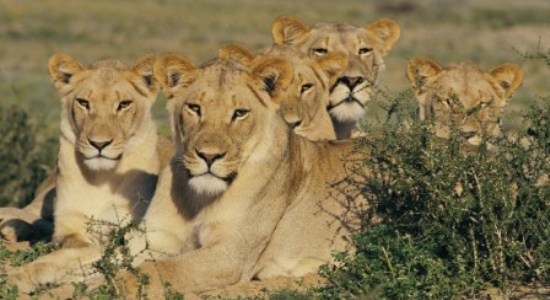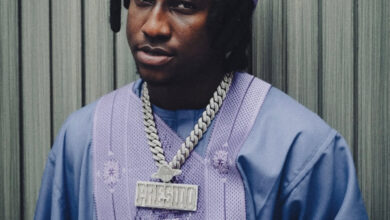20 Things you don’t know about Kruger National Park

1. Kruger National Park is one of the largest game reserves in Africa
2. It covers an area of 19,633 square kilometres (7,580 sq mi) in the provinces of Limpopo and Mpumalanga in north-eastern South Africa, and extends 360 kilometres (220 mi) from north to south and 65 kilometres (40 mi) from east to west. The administrative headquarters are in Skukuza
3. Areas of the park were first protected by the government of the South African Republic in 1898, and it became South Africa’s first national park in 1926.
4. To the west and south of the Kruger National Park are the two South African provinces of Limpopo and Mpumalanga. In the north is Zimbabwe, and to the east is Mozambique. It is now part of the Great Limpopo Transfrontier Park, a peace park that links Kruger National Park with the Gonarezhou National Park in Zimbabwe, and with the Limpopo National Park in Mozambique.
5. The park is part of the Kruger to Canyons Biosphere an area designated by the United Nations Educational, Scientific and Cultural Organization (UNESCO) as an International Man and Biosphere Reserve (the “Biosphere”)
6. Kruger National Park has 9 main gates that allow entrance to the different camps.
7. In 1895, Jakob Louis van Wyk introduced in the Volksraad of the old South African Republic, a motion to create the game reserve which would become the Kruger National Park
8. The park was initially created to control hunting and protect the diminished number of animals in the park
9. James Stevenson Hamilton became the first warden of the reserve in 1902.
10. After the proclamation of the Kruger National Park in 1926, the first three tourist cars entered the park in 1927, jumping to 180 cars in 1928 and 850 cars in 1929
11. The Makuleke area in the northern part of the park was forcibly taken from the Makuleke people by the government in 1969 and about 1500 of them were relocated to land to the South so that their original tribal areas could be integrated into the greater Kruger National Park
12. The climate of the Kruger National Park and Lowveld is subtropical. Summer days are humid and hot with temperatures often soaring to above 38 °C (100 °F). The rainy season is from September until May. The Kruger National Park website lists September and October as the driest periods, culminating in rains late in October. The dry winter season is the ideal time to visit this region for various reasons. There is less chance of contracting malaria and the days are milder. Viewing wildlife is more rewarding as the vegetation is more sparse and animals are drawn to the waterholes to drink every morning and evening
13. Out of the 517 species of birds found at Kruger, 253 are residents, 117 non-breeding migrants, and 147 nomads. Some larger birds require large territories or are sensitive to habitat degradation and are consequently by and large restricted to Kruger and other extensive conservation areas. Six of these are assigned to a fanciful grouping called the ‘Big Six Birds’. They are the Lappet-faced Vulture, Martial Eagle, Saddle-billed Stork, Kori Bustard, Ground Hornbill and the reclusive Pel’s Fishing Owl, which is localized and seldom seen. There are between 25 and 30 breeding pairs of Saddle-billed Storks in the park, besides a handful of non-breeding individuals. In 2012 178 family groups of Ground Hornbills roamed the park and 78 nests were known, of which 50% were active
14. Kruger houses 114 species of reptile, including black mamba and 3000 crocodiles
15. The Kruger National Park has 21 rest camps, as well as 2 private lodge concessions, and 15 designated private safari lodges. The concessions are parcels of land operated by private companies in partnership with communities, who outsource the operation of private lodges. Camping in the park has become popular with tourists and backpackers because it is much less expensive, and open to anyone, requiring no special permission to partake
17. In December 2012, Kruger started using a Seeker II drone against rhino poachers. The drone was loaned to the South African National Parks authority by its manufacturer Denel Dynamics, South Africa
| 18. Wildlife Population As of 2009 | |||
|
Species |
Count |
Species |
Count |
| African Buffalo | 27,000 | African Wild Dog | 150 |
| Black Rhinoceros | 350 | White Rhinoceros | 7,000 to 12,000 |
| Burchell’s Zebra | 17,797 | Bushbuck | 500 |
| Cheetah | 120 | Common Eland | more than 300 |
| Giraffe | 5,114 | Greater Kudu | 5,798 |
| Hippopotamus | 3,000 | Lion | 2,800 |
| Leopard | 2,000 | Spotted Hyena | 2,000 |
| Elephant | 11,672 | Waterbuck | 5,000 |
| Blue Wildebeest | 9,612 | Impala | 1,500,000 |
19. Kruger National Park is one of the largest national parks in the world, with an area of 19,485 square kilometres (7,523 sq mi) The park is approximately 360 kilometres (220 mi) long, and has an average width of 65 kilometres (40 mi). At its widest point, the park is 90 kilometres (56 mi) wide from east to west
20. The park’s anti-poaching unit consists of 650SANParks game rangers, assisted by the SAPS and the SANDF (including the SAAF). As of 2013, the park is equipped with two drones borrowed from Denel and two Aérospatiale Gazelle helicopters, donated by the RAF to augment its air space presence. Automated movement sensors relay intrusions along the Mozambique border to a control center, and a specialist dog unit has been introduced. Buffer zones have been established along the border with Mozambique, from where many poachers have infiltrated the park, as an alternative to costly new fences. The original 150 km long fences were dropped in 2002 to establish the Great Limpopo Transfrontier Park. The national anti-poaching committee oversees all activities and coordinates interested parties




